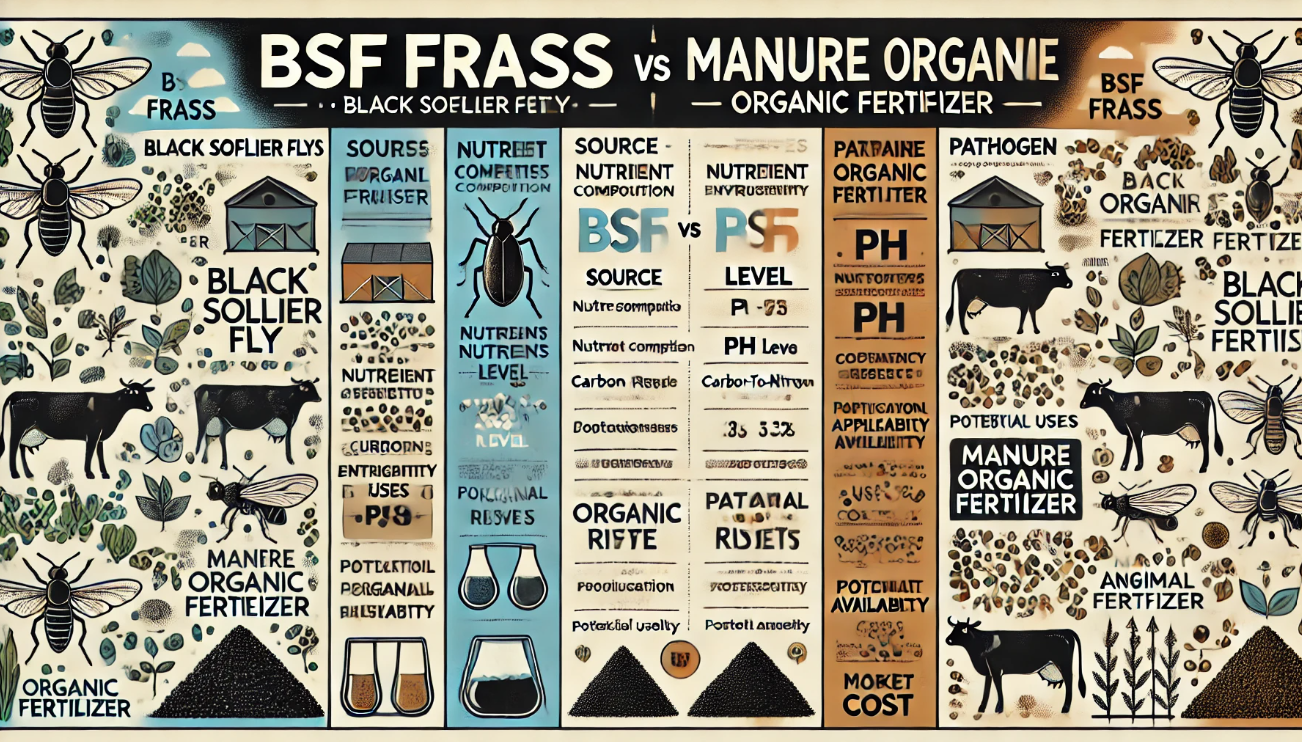| Source | Residues from Black Soldier Fly production, mainly faeces and undigested substrate | Animal manure (cattle, poultry, swine, etc.) |
| Nutrient Composition | Balanced N:P2O5ratio of 1:0.9:1.1, slightly alkaline (pH 7.5), nutrient-rich with high variation in micronutrient contents | Highly variable, depends on animal type and diet, generally lower nutrient consistency |
| pH Level | Slightly alkaline (pH 7.5) | Typically neutral to slightly alkaline |
| Carbon-to-Nitrogen Ratio | Comparatively high | Lower than BSF frass, depends on manure type |
| Nutrient Release | Limited immediate nutrient release, suitable as a long-term fertilizer | Generally faster nutrient release, may require careful management to avoid nutrient leaching |
| Pathogen Risk | Low, due to the biological processing in BSF production | Higher, potential for pathogens and contaminants, requires proper composting |
| Environmental Impact | Promotes nutrient cycling, sustainable circular agriculture | Can contribute to nutrient runoff and pollution if not managed properly |
| Consistency | More uniform, though micronutrient content varies | Highly variable, depends on animal and feedstock |
| Odor | Less odor compared to manure | Can have a strong, unpleasant odor |
| Application Suitability | Long-term fertilizer, improves soil health over time | Can be used as both short-term and long-term fertilizer |
| Potential Uses | Suitable for a variety of crops, promising element in sustainable agriculture | Widely used across various agricultural applications |
| Production Variability | Nutrient content varies based on BSF feed and production systems | Varies widely depending on animal source and composting process |
| Market Availability | Emerging, gaining importance with increasing BSF production | Established, widely available |
| Cost | Potentially higher due to processing | Generally lower, but varies by type and processing |

